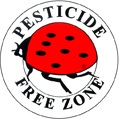As most of the world would know by now, the XLVIII Olympic Games are being hosted in London, England in July 2012. Indeed, the Games begin in only 100 days. While I normally enjoy watching coverage of many events, I will be watching with a more sceptical eye this year. Indeed, if I could be there in person, I would certainly want to participate in some protests.
This comes rather suddenly to me as I learned today that Dow Chemical Company (Dow Chemical) has been selected as a major sponsor of the games, touted to be the most sustainable games to date. Indeed, BP has been selected as the Games’ sustainability sponsor. Each of these seems not a little outrageous to me, given the disaster at the Union Carbide (now Dow Chemical) plant at Bhopal, India and BP’s drilling disaster Gulf of Mexico at the Deepwater Horizon platform.
The metal for the 2012 Olympic medals is being provided by Rio Tinto, a giant British mining company. I was previously unaware of this company and the issues surrounding it, but a quick Google search reveals a flurry of activity ranging from air pollution to human rights abuse to gold and uranium mining, and much more.
In response to these sponsorships, and the dark shadow they cast on the “sustainable” Games, three groups have joined forces to create Greenwash Gold 2012. The London Mining Network, the Bhopal Medical Appeal, and the UK Tar Sands Network are all deeply concerned about the message sent by the London 2012 Games regarding the green or “sustainable” nature of Dow, BP, and Rio Tinto. So what’s the big deal? I will provide brief summaries below, but you can check out Greenwash Gold 2012 for more information and to cast your vote for the Greenwash Gold Medal. They also have produced short animations depicting (an interpretation of) the atrocities committed by each company.
Dow Chemical

With its sponsorship, Dow Chemical taints the 2012 Olympics in London. Click the image to go and read the article at The Ecologist, and sign the petition to stop their Olympic partnership.
In 1984, Union Carbide Corporation (UCC) operated a pesticide manufacturing facility in Bhopal, India, producing a chemical called carbaryl (Sevin™). Production of carbaryl pesticide involved the intermediary chemical methyl isocyanate (MIC). A significant factor in locating the facility in India was that regulation in the United States were deemed “too restrictive.”
An extremely toxic chemical, MIC (CH3NCO) is slightly soluble in, but reacts strongly with, water. Indeed, with excess water, MIC has a half-life of approximately nine minutes, and releases approximately 1.36 kJ of heat energy per gram of MIC (that’s a lot).(1) When this heat is not moved quickly away, the MIC can quickly come to a boil. And when the storage vessel is in poor repair, it can explode. This is essentially what happened at Bhopal. Thousands were killed, and they were the lucky ones. Tens- to hundreds-of-thousands of survivors suffer from painful physical conditions, including various cancers, skin conditions, respiratory problems, and more.(2)
Despite claims to the contrary, UCC did little to help the victims of the disaster. In 2001, Dow Chemical merged with UCC, but refused to accept any responsibility for the Bhopal disaster. This in spite of the fact that, while UCC remains a “separate business to Dow”, Dow “owns 100% of its shares, elects its board, and UCC’s current CEO is even a senior Dow official.”(3)
And now Dow is happily trying to “green its image” by participating as a major sponsor of the London 2012 Olympic Games. Can you say Greenwash?
BP
After the events of April – October 2010 in the Gulf of Mexico, I think I would be hard-pressed to find someone unaware of at least one of BP’s environmental atrocities. It is laughable indeed to have them as the Sustainability Sponsor of the Games.
On April 20, 2010, BP’s Mobile Offshore Drilling Unit Deepwater Horizon exploded in the Gulf of Mexico, leading to the largest environmental disaster in United States history. In order to deal with the financial burden this caused, BP liquidated much of its Canadian holdings. However, it is still very active in the controversial development of the Alberta Oil Sands. BP and other resource companies don’t seem to understand that, while there is a lot of oil tied up in those deposits, we need it to last. And we need time to develop technologies and methods of understanding and remediating these developments.
Adding insult to injury, BP is actively exploring for economical oil reserves in the Arctic. While spills are equally destructive no matter their location, the Gulf of Mexico is far more accessible to those working to clean it up. A spill in the Arctic would likely be a disaster beyond our comprehension. Imagine polar bears wandering around, coated black from sticky oil, licking and consuming this oil in an effort to stay clean. No doubt any attempt to clean up an Arctic spill will be hampered both by simple geography (climate conditions, terrain, etc) and by wildlife.
So of course they would take the opportunity to sponsor the Olympics as a “sustainability” sponsor in an effort to clean up their severely tarnished name. Don’t let them get away with it!
Rio Tinto
For Rio Tinto I am going to have to defer to the massive knowledge of the Internet. You can start by reading at Greenwash Gold 2012.



 Tomorrow is Canada Day!
Tomorrow is Canada Day! 



You must be logged in to post a comment.